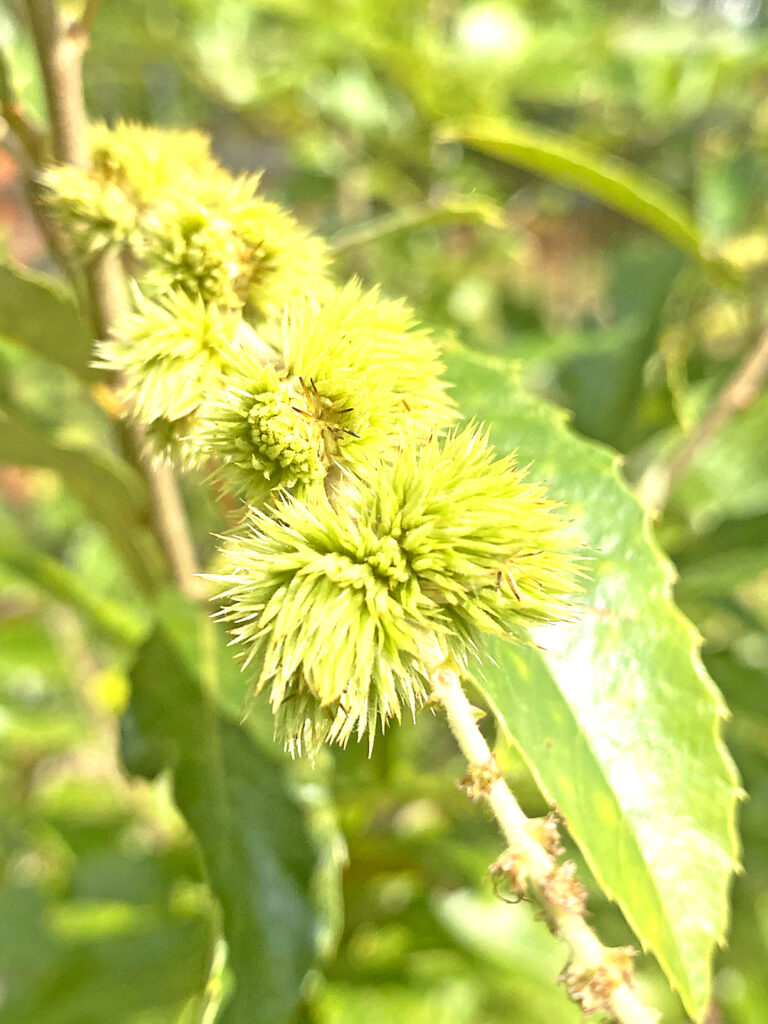Chinquapin

By LYNN ARTZ, SANDY TEDDER and DAVID RODDENBERRY
Chinquapin (Castanea pumila) is a small multi-trunked, nut tree. It grows 15-30 feet tall by 15-20 feet wide. Found in dry, open pinewoods, it prefers full to part sun. In spring, chinquapin flowers are striking. The 4-6-inch male catkins stand erect like slender white candles. The toothed leaves turn golden in fall. The fruit is a spiny burr-covered nut that matures in fall. Chinquapin nuts are half the size but sweeter than chestnuts. Squirrels, opossums, woodpeckers, turkeys, black bear, and deer eat them, and they are important for fox squirrels. The leaves support orange-tipped oakworm moths. Chinquapin is related to American chestnut, now nearly extinct due to chestnut blight, an imported fungus. Chinquapin has moderate resistance to chestnut blight. The chinquapin at Sopchoppy Depot Park is now sporting spiny burrs.


